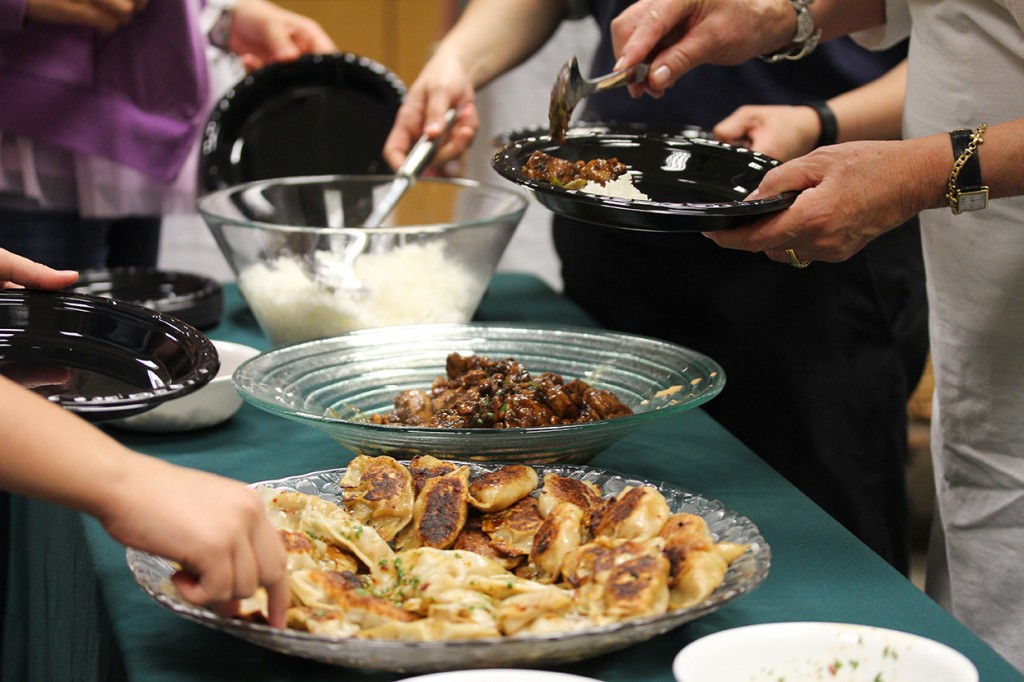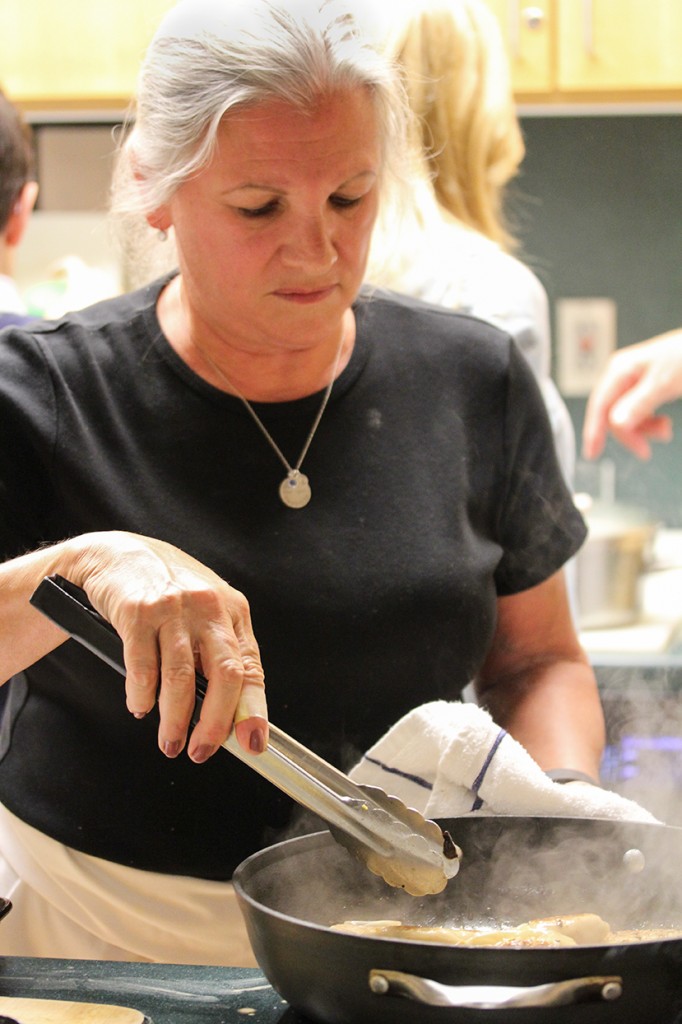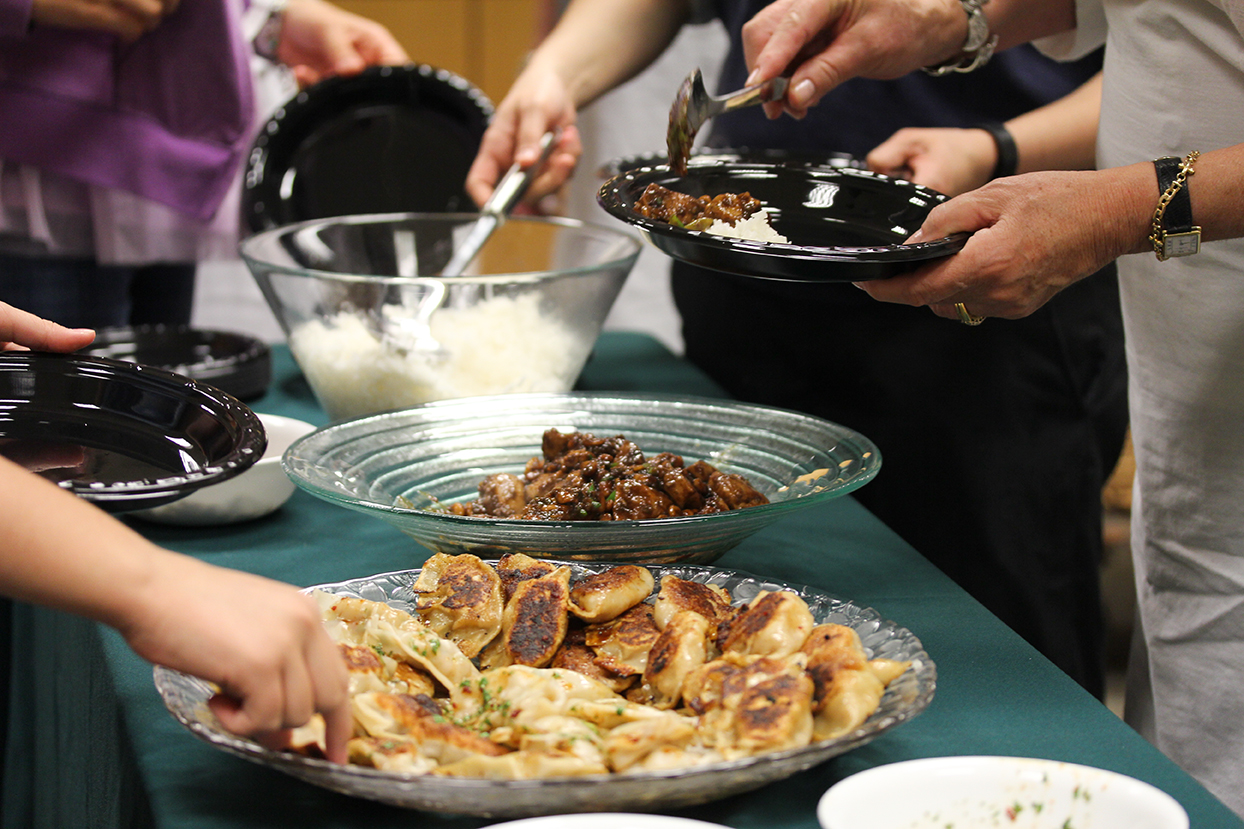
A typical meal from a Chinese restaurant in the U.S. wouldn’t be complete without fortune cookies, wonton soup and some orange chicken.
However, in China, this couldn’t be further from the truth. There are no fortune cookies, wonton soup is typically only served for breakfast and orange chicken will be difficult to find on the menu.
When graduate student Chao Yu left her home in Qingdao, China to attend the University of Miami, she expected some culture shock. Yet, she did not realize food from her homeland would be prepared differently to please the American palate.
SEE ALSO: Travel not required to sample flavors from around globe
Yu notes that dishes such as orange chicken and honey chicken are not regularly served in China. Eating in Americanized establishments like Panda Express (located on campus) can feel disappointing.
“If I go back to China, we can have fried rice and fried noodle, too, but those are slightly different from the restaurant here because they are so oily, I have to say, [at] Panda Express,” Yu said. “So, I just ordered one time the chow mein, then I moved to steamed rice forever, because those fried noodles are too oily.”
International students who attend college in the U.S. are in a position similar to Yu. They struggle to satisfy their cravings for authentic cuisines that remind them of home.
Senior Rakan AlSabah’s favorite dish, Machboos, reminds him of his home in Kuwait. Machboos is a popular dish made of rice with different forms of protein. The dish is usually served during lunch, the main meal of the day in Kuwait.
Making good Machboos is considered a sign of culinary excellence, AlSabah said.
“My favorite version would be the lamb, but chicken is what I eat most at home,” he said. “Growing up, I don’t think there went a day where there wasn’t Machboos prepared.”
Sophomore Avisha Gopalakrishna, who was born in Hong Kong but grew up in India, loves pan-Asian cuisine, from shumai, which are pork dumplings, to Indian classics like biryani, a rice dish made with spices, vegetables and meat.
“Biryani is especially close to me because I eat it at home in India all the time,” she said. “In fact, it’s the dish my parents make sure is prepared for me the day I arrive back from college.”
Kitchen creations
AlSabah has tried to find local restaurants that serve Machboos but hasn’t been successful.
“Although Machboos may sound very simple, there are a few spices we use to season our lamb, chicken and fish which give it a specific flavor that I haven’t seen recreated here,” he said. “I have had some good imitations of Machboos in Miami, such as at Barbar on SW 8th St., but still with a significant difference in flavor.”
SEE ALSO: Global flavors add special spice
Instead, AlSabah shops at ethnic markets to make his own Machboos and some of his other favorite dishes such as Om Ali, a dessert made with puff pastry, milk and nuts.
“Like the typical international student, I called home a thousand times to get the recipe and instructions to make the comfort food I could not find locally,” he said. “There are different versions of Om Ali which makes it somewhat accessible in Miami, and although I have had Om Ali in the Northeast, I have yet to find a place that serves it in Miami.”
Sophomore Marcus Lim’s favorite dishes are those that remind him of what he used to eat at home in Singapore, from dim sum to rice and noodles.
“The ethnic dishes I like are anything Asian, so that means Chinese, Japanese and Korean,” he said.
When Lim looks for Asian cuisine near campus, he is disappointed in the food’s authenticity. Restaurants like Stir Moon and Moon Thai, popular among students due to their proximity to campus, aren’t the best, he said.
Instead, he also goes to Asian grocery stores.
“There are restaurants around Miami, but the Asian population is low so it has been difficult to find a good restaurant,” Lim said. “There are ethnic markets though, such as the Asia Grocery or Asian markets, which do have a wide range of variety.”
Chef Mercedes Varela-Mendez teaches a series of globally inspired cooking classes at the Wellness Center. The themes for this semester have included Moroccan, Mexican, Italian and Thai cuisine. She always keeps international students in mind when planning her courses since she hopes it’s one way she can connect them to something familiar.
“You’re young, you come to the university, everything is new, everything is different – the food is different, the culture is different, so if I can give at least those two hours that they’re here something that they know or they have tasted from wherever they are from, that’s rewarding,” she said.
She draws inspiration for the menu from her own exposure to international cuisine while she studied at Le Cordon Bleu College of Culinary Arts Miami. She was introduced to food from around the world and wanted to share it with others.
“To learn something new, to taste something new, to enjoy something new and, even better, to cook something new that you’ve never done before,” Varela-Mendez said about her cooking classes.

Finding authentic dishes
While it can be challenging for a college student to cook every day, students like Gopalakrishna, who live on campus without a kitchen, have to rely on restaurants near campus to find their favorite dishes from home.
“While Miami does have a large variety of cuisines to choose from, it has been a struggle for me as a college student to find affordable ethnic restaurants,” Gopalakrishna said.
One restaurant that she does go to for Indian food is Bombay Masala near Sunset.
Varela-Mendez says the problem is often that American restaurants serving international foods try to please everyone’s palate and lose the cuisine’s authenticity in the process.
“You have good restaurants, and then you have others that try to imitate,” she said. “But then again, they change it because they Americanize it because they’re trying to please the general public … and by doing so, I think you lose the essence of authenticity.”
Gopalakrishna, vice president of the Council of International Students and Organizations (COISO), said the campus organization plans events throughout the year like International Week and incorporate ethnic dishes into the programs to allow for students to try food from around the world.
“I definitely would agree that food is an important part of any ethnic culture, if not the most important,” Gopalakrishna said. “While many of us may be third generation or even fourth generation kids, I think one of the biggest aspects that keep us close to our culture is the food we eat. It embodies everything about the way we differ as people from around the world, yet unites us in our love for food.”
Smaller socials like potluck dinners that COISO holds invite students to cook or bring ethnic food to share with others.
Yu believes there is a large community of international students from China at UM, and they enjoy getting together for parties and eating familiar foods like a hot pot, a simmering stew of meat and vegetables. Like most Chinese dishes, it is served family style, with several people eating out of the same dish and enjoying the company as much as the cuisine.
“If you want to learn something about the local community, go to have food there because it represents the local culture,” Yu said. “So, because Chinese culture is sometimes represented in a Chinese table together with Chinese food, you can say we like to work together and eat together because we eat from the same dish.”






